301. The end of
glyph line Ga3 was evidently the place for
Pu Mahore, marking where the
new year (the new Land) was
about to begin.
|
0. Nga Kope Ririva Tutuu
Vai A Taanga |
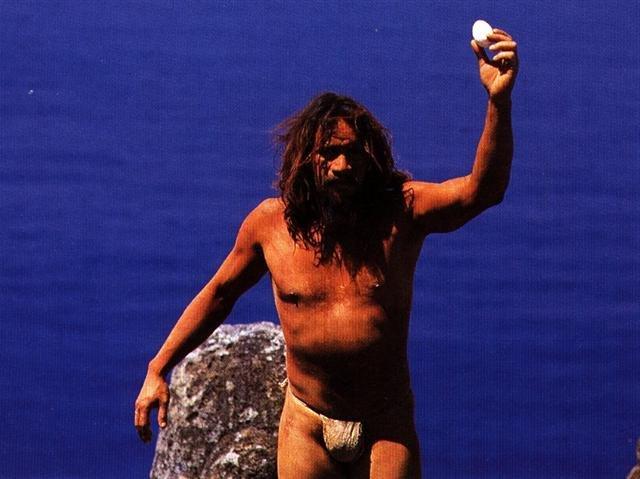
|
1. PU
MAHORE |
Poko Uri |
Te Manavai |
Te Kioe Uri |
Te Piringa Aniva |
Te Pei |
Te Pou |
Hua Reva |
|
Akahanga |
Hatinga Te Kohe |
Roto Ire Are |
Tama |
One Tea |
HANGA
TAKAURE |
Poike |
16. Pua Katiki |
| Maunga Teatea |
Mahatua |
Taharoa |
20. HANGA
HOONU |
| RANGI MEAMEA |
Peke Tau O Hiti |
Maunga Hau Epa |
24. HANGA MORIA ONE |
|
JUNE 7 (*78) |
8 |
9 |
10 (161) |
11 |
12 |
 |
 |
 |
 |
 |
 |
|
Ga3-19 (78) |
Ga3-20 → 320 |
Ga3-21 |
Ga3-22 |
Ga3-23 |
Ga3-24 |
|
The Knot (Ukdah) |
Rishu A.-13 (Head of
the Lion)
ψ Leonis (146.4),
RAS ELASET AUSTRALIS
= ε Leonis
(146.6) |
VATHORZ PRIOR = υ
Carinae
(147.9) |
|
Star-25 (Horse)
/
ANA-HEU-HEU-PO-5
(Pillar where
debates were
held)
ALPHARD (Horse?)
= α Hydrae
(142.3), ω
Leonis (142.6),
τ¹ Hydrae
(142.7) |
Al Tarf-7 (The
End)
ψ Velorum
(143.3),
ALTERF (The End)
= λ Leonis,
τ² Hydrae
(143.4), ξ
Leonis (143.5) |
A Hydrae
(144.1)
VEGA (α Lyrae)
|
UKDAH (Knot) = ι
Hydrae
(145.4), κ
Hydrae (145.5),
SUBRA = ο Leonis
(145.8)
*104 = *145.4 -
*41.4 |
|
...
τ¹,
4.9, flushed
white, and
τ²,
4.6, lilac, with
ι and the 5th
magnitude A,
form the curve
in the neck,
Ptolemy's
Καμπή;
but Kazwini knew
them as Ukdah,
the Knot
... |
|
... 'From the
time I was in
your womb,'
Maui went
on, 'I have
known the names
of these
children of
yours. Listen,'
he said as he
pointed to his
brothers in
turn. 'You are
Maui mua,
you are Maui
roto, you
are Maui taha,
and you are
Maui pae.
And as for me, I
am Maui
potiki,
Maui-the-last-born.
And here I am.'
When he had
finished,
Taranga had
to wipe her eyes
because there
were tears in
them, and she
said: 'You are
indeed my
lastborn son.
You are the
child of my old
age. When I had
you, no one
knew, and what
you have been
saying is the
truth. Well, as
you were formed
out of my
topknot you can
be Maui
tikitiki a
Taranga.' So
that became his
name, meaning
Maui-formed-in-the-topknot-of-Taranga.
And this is very
strange, because
women in those
days did not
have topknots.
The topknot was
the most sacred
part of a
person, and only
men had them
...
...
On the late
afternoon of the
June solstice,
towards sunset,
we reached
Ahu Akivi
near the centre
of the western
side of Easter
Island. This is
an inland site,
3 kilometers
from the coast.
Like Ahu Nau
Nau at
Anakena, it
has seven
Moai, but in
this case none
of them have
topknots and,
uniquely, all
face west
towards the sea
- which is
clearly visible
from the high
point on which
they stand ...
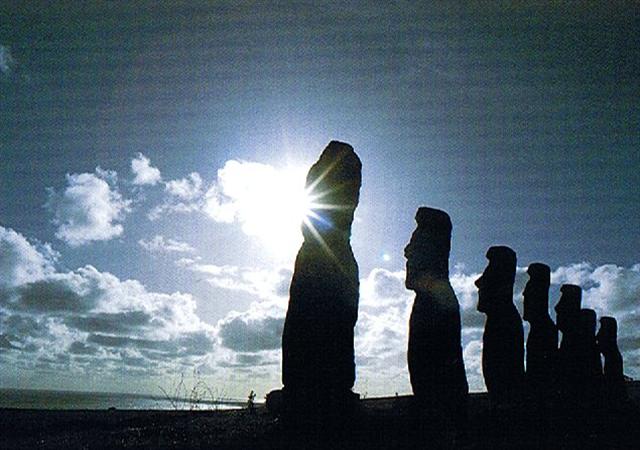 |
|
Aug 10 |
11 |
12 |
13 |
14 (*146) |
15 (227) |
|
°Aug 6 |
7 |
8 (220) |
9 |
10 |
11 (*143) |
|
'July 14 |
15 |
16 |
17 (*118) |
18 |
19 (200) |
|
SIRIUS |
"July 1
Te Kioe Uri |
2
Te Piringa Aniva |
3 (*104)
Te Pei |
4 (185 = 181 + 4)
Te Pou |
Anakena 5
2nd time at Hanga Te
Pau |
|
... He got up, the
path went uphill,
and he came (back)
to the house. It was
dark when he reached
the house. When he
came to the yam
plantation of
Kuukuu, he sat
down. Night was
falling.
Ira
asked Makoi
the following
question: 'How did
you fare when you
wandered, when you
went searching, when
you found yourself
on the path of the
dream soul of the
father?' Makoi
replied, 'There are
indeed all those
places. I did not
forget them at all
(? kai viri kai
viri) when I saw
them (text
corrected,
i-ui-nei). I
alone saw no fewer
than four of my
[sic!] places, and I
returned here only
because night was
falling.'
Then Ira
spoke again: 'How
did you name them,
last-born?'
Makoi replied,
'This is what
happened, this is
how I gave the
names. I wrote (ta)
Te Manavai A Hau
Maka on the
surface of a banana
leaf (kaka),
and this is how I
left it.' This is
how Makoi
remembered it. No
sooner had he said
this, when Ira
gew angry and
quarrelled with
Makoi. He said
the following (to
him): 'You did not
pay attention,
last-born, and you
did not give the
(full) name. This is
how it should be:
the
Manavai of Hau Maka
of Hiva,
in memory (mo
aringa ora) of
the father, of his
dream soul.'
Makoi
replied, 'In Hiva
the land belongs to
him - this land here
is mine, not his!'
[E:21] |
 |
|
... They
stayed (there
longer). On the
fifth day of the
month of July (Anakena)
[day 186 + 41 = 227], they
all got up, went
downhill, went on,
and reached
Hanga Te Pau.
They took their
provisions with
them, carrying them
on their shoulders,
went on, and reached
Te Pou.
They made camp
and slept in
Te Pou on
the tenth of the
month of July (Anakena).
Then they all got
up, carried their
provision on their
shoulders, went
straight ahead, and
followed the path of
the dream soul of
Hau Maka.
They
came to Hua Reva
and said, This is
Hua Reva A Hau Maka! |
|
CLOSE TO THE FULL
MOON: |
|
DEC 7 |
8 |
9 |
10 |
11 (345) |
12 (*266) |
|
Hau Maka had
a dream. The dream
soul of Hau Maka
moved in the
direction of the sun
(i.e., toward the
East). When, through
the power of her
mana, the dream
soul had reached
seven lands, she
rested there and
looked around
carefully. The dream
soul of Hau Maka
said the following:
'As yet, the land
that stays in the
dim twilight during
the fast journey has
not been reached.' |
NGA KOPE RIRIVA
TUTUU VAI A TE
TAANGA |
PU MAHORE |
|
The dream soul of
Hau Maka
continued her
journey and, thanks
to her mana,
reached another
land. She descended
on one of the small
islets (off) the
coast. The dream
soul of Hau Maka
looked around and
said: 'These are his
three young men.'
She named the three
islets 'the handsome
youths of Te
Taanga, who
are standing in the
water'.
The dream
soul of
Hau Maka
continued
her journey
and went
ashore on
the (actual
Easter)
Island. The
dream soul
saw the fish
Mahore,
who was in a
(water) hole
to spawn
(?), and she
named the
place Pu
Mahore A Hau
Maka O Hiva.
|
|
|
BUNDA
(Foundation) /
KAKKAB
NAMMAΧ (Star of
Mighty Destiny) |
θ Piscis Austrini
(330.1), λ Oct.
(330.7) |
|
Al Sa'd al
Su'ud-22 (Luckiest
of the Lucky) /
Emptiness-11
(Rat)
TSIN = 36 Capricorni
(325.2),
ALPHIRK (The Flock) = β Cephei
(325.7),
SADALSUD = β Aquarii,
ξ Gruis (325.9) |
no star listed (326) |
CASTRA = ε
Capricorni
(327.2),
BUNDA (Foundation) = ξ Aquarii
(327.5)
SIRIUS (α Canis
Majoris)
|
Mahar sha hi-na
Shahū-26 (Western
One in the Tail of
the Goat)
NASHIRA (Bringer of
Good Tidings) = γ
Capricorni
(328.0), ν Oct.
(328.3),
AZELFAFAGE (Tail of
the Hen) = π¹
Cygni,
κ Capricorni (328.7) |
Arkat sha hi-na
Shahū-27 (Eastern
One in the Tail of
the Goat)
ENIF (the Nose) = ε
Pegasi, ERAKIS (The
Dancer) = μ
Cephei
(329.2), 46
Capricorni,
JIH (the Sun) = κ
Pegasi
(329.3), ι Piscis
Austrini (329.4), λ
Capricorni (329.6),
ν Cephei (329.7),
DENEB ALGIEDI (Tail
of the Goat) =
δ Capricorni
(329.8) |
|
... In China, with
Capricornus, Pisces,
and a part of
Sagittarius, it
[Aquarius]
constituted the
early Serpent, or
Turtle, Tien Yuen;
and later was known
as Hiuen Ying,
the Dark Warrior and
Hero, or Darkly
Flourishing One, the
Hiuen Wu, or
Hiuen Heaou, of
the Han dynasty,
which Dupuis gave as
Hiven Mao. It
was a symbol of the
emperor Tchoun
Hin, in whose
reign was a great
deluge; but after
the Jesuits came in
it became Paou
Ping, the
Precious Vase.
It contained three
of the sieu, and
headed the list of
zodiac signs as the
Rat, which in
the far East was the
ideograph for
'water', and still
so remains in the
almanacs of Central
Asia, Cochin China,
and Japan ...
...
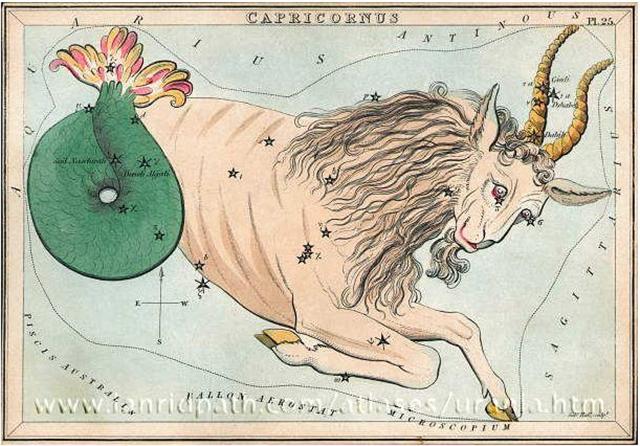 |
|
Febr 9 (40) |
10 |
11 (407) |
12 |
13 (*329) |
All Hearts' Day |
|
°Febr 5 |
6 |
7 |
8 (*324) |
9 (40) |
10 |
|
'Jan 13 (378) |
14 |
15 (*300) |
16 |
17 |
18 (383) |
|
In Sweden
the custom is to throw
the Christmas Tree away
20 days after December
24 (358), which means in
day 378 (the synodic
cycle of Saturn). The
name of this day
(January 13) is Knut
(Knot).
... When it was evident
that the years lay ready
to burst into life,
everyone took hold of
them, so that once more
would start forth - once
again - another (period
of) fifty-two years.
Then (the two cycles)
might proceed to reach
one hundred and four
years. It was called
'One Age' when twice
they had made the round,
when twice the times of
binding the years had
come together. Behold
what was done when the
years were bound - when
was reached the time
when they were to draw
the new fire, when now
its count was
accomplished. First they
put out fires everywhere
in the country round.
And the statues, hewn in
either wood or stone,
kept in each man's home
and regarded as gods,
were all cast into the
water. Also (were) these
(cast away) - the
pestles and the (three)
hearth stones (upon
which the
cooking pots rested);
and everywhere there was
much sweeping - there
was sweeping very clear.
Rubbish was thrown out;
none lay in any of the
houses ...
... In China, every
year about the
beginning of April,
certain officials
called Sz'hüen
used of old to go
about the country
armed with wooden
clappers. Their
business was to
summon the people
and command them to
put out every fire.
This was the
beginning of the
season called
Han-shih-tsieh,
or 'eating of cold
food'. For three
days all household
fires remained
extinct as a
preparation for the
solemn renewal of
the fire, which took
place on the fifth
or sixth day after
the winter solstice
[Sic! Though their
solstice may have
corresponded to
"December 30]
...
... Among the
Nahyssan of S.
Carolina time was
measured and a rude
chronology arranged
by means of strings
of leather with
knots of various
colour, like the
Peruvian quipos.
The Dakota use a
circle as the symbol
of time, a smaller
one for a year and a
larger one for a
longer period: the
circles are arranged
in rows, thus: OOO
or O-O-O. The Pima
of Arizona make use
of a tally. The
year-mark is a deep
notch across the
stick ... |
|
"Dec 30 (4 *
91)
|
31 (*285) |
"Jan 1 (380 -
14) |
2 |
3 (368) |
4 |
It seems
reasonable to primarily
understand the kuhane
stations as places in the
structure on the path of the
Sun in his yearly cycle,
making it rather meaningless
to search for them in the
geography of space. We can
assume they were
(re-)defined in Roman times
and then applied in a
general sense, finally to be
documented in Manuscript E
by using the well known local geography
and the figure of Makoi
(possibly a version of the
Mayan 7-Macaw, Ursa
Major) in order to make
people remember (not
forget).
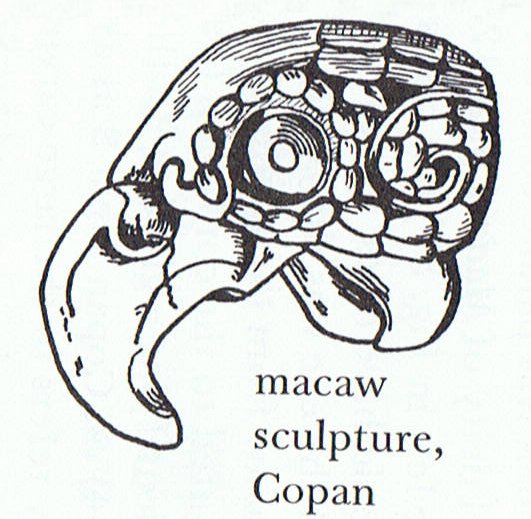
The 3 islets
outside the southwestern corner
of Easter Island served
perfectly well for making
people not forget where
the year was beginning:
|
kai viri kai
viri.ko raua
ana a totoru. |
Unforgotten are
they, these
three. |
|
peira tokoa te
kainga e moe mai
era
|
And therefore
this is the
(right) land
lying there; |
|
ko te pito o te
kainga i nape ai
e toona kuhane. |
this is Te
Pito O Te Kainga,
which also
received its
name from the
dream soul. |
| MAY 20 (80 + 60) |
21 |
22 |
23 (*63) |
 |
 |
 |
 |
| Ga3-1 |
Ga3-2 (aaa) |
Ga3-3 |
Ga3-4 (63) |
| AL TARF (The End) = β Cancri (124.3)
RAS ALGETHI (α Herculis)
|
χ Cancri (125.2), BRIGHT FIRE = λ Cancri (125.4) |
AVIOR = ε Carinae (126.4), φ Cancri (126.8)
*85 = (*126.4 - *41.4) |
ο Ursae Majoris (127.4)
*86 = (*127.4 - *41.4) |
| July 23 (177 + 27 = 204) |
24 |
25 |
26 (148 + 59) |
| °July 19 (200 = 177 + 23) |
20 |
21 |
22 |
| 'June 26 (6 * 29½) |
27 |
28 |
29 |
| "June 12 (163 = 177 - 14) |
13 (*84 = *125.4 - *41.4) |
14 (165 + 365) |
Te Maro 15 (18 * 29½) |

Makoi got up and began to familiarize himself with the (new) land. (This took place) on the fifteenth day of the month of June ('Maro'). He went toward the sheer face of the rocks (titi o te opata), was astonished (aaa), came up to the middle (of the outer rim of the crater), and stood at the very edge.

He looked down and saw the 'Pu Mahore of Hau Maka' (on the coast) and said, 'There it is, the hole of the mahore fish of Hau Maka!' He turned his face and looked toward the back (i.e., in the direction of the crater). No sooner had he seen how the dark abyss opened up (below him), when a fragrant breeze came drifting by. Again Makoi said, 'This is the dark abyss of Hau Maka'. He turned around, walked on in utter amazement, and arrived at the house. He spoke to Ira, 'Hey you, my friends! How forgetful we (truly) are. This place is adequate (? tau or 'beautiful'), the dark abyss lies there peacefully!' Ira replied, 'And what should that remind us of up here?' All arose and climbed up. They went on and arrived; they all had a good look (at the inside of the crater). They returned home and sat down. Night fell, and they went to sleep ...

... This mythical bird is Itzam-Yeh, Classic prototype of Wuqub-Kaqix, 'Seven-Macaw', of Popol Vuh fame. In that story, in the time before the sky was lifted up to make room for the light, the vainglorious Seven-Macaw [= Ursa Major] imagined himself to be the sun. Offended by his pride, the Hero Twins humbled him by breaking his beautiful shining tooth [possibly Thuban which shone closely above our Ursa Major] with a pellet from their blowgun. This pot shows One-Ahaw aiming at the bird as he swoops down to land in his tree. As Itzam-Yeh lands on his perch, the text tells us he is 'entering or becoming the sky'.
... The star which at the time of Seven-Macaw (the 7 stars of Ursa Major) had pointed out the position at the center of the Whirlpool was Alioth (ε Ursae Majoris) ... In 3149 BC the stars were positioned 70 right ascension days earlier than at the time of rongorongo. Therefore η Andromedae (at Legs, the place of the Wolf) would have risen with the Sun in 91 (April 1) - 70 = 21 January (= 32 days after the solstice). At that time of the year Alioth would have been close to the Full Moon in day 21 + 183 = 204 (23 July) ...
... The date in the year 3149 BC, when the false sun bird Itzam-Yeh (alias Seven-Macaw) had been defeated, was 28 May and at the time of rongorongo the alpha-star of the Bull (Aldebaran) rose heliacally in May 28 (148) ... |
| Last 4 of the first 7 places named by Makoi:
Possibly these places were alluding also to the change from the Julian spring equinox to the Gregorian spring equinox:
... When the Pope rearranged the day for spring equinox from number 84 ('March 25) to number 80 (ºMarch 21) the earlier Julian structure was buried, was covered up (puo). At the same time the Pope deliberately avoided to correct the flow of Julian calendar days for what he may have regarded as 4 unneccesary leap days prior to the Council of Nicaea. Thus his balance sheet for days was in order. The day numbers counted from the equinox were increased with 4 and this was equal to allowing the 4 'unneccessary' leap days to remain in place. But he had moved spring equinox to a position which was 4 days too early compared to the ancient model ... These '4 unneccessary leap days' (prior to the Council of Nicaea) were equal in number to the precessional distance in time between the Pope and the time of rongorongo. The Gregorian calendar could therefore be easily understood by the Easter Islanders. The Pope had created a 'crooked calendar' but since his time the precession had fixed it ...

|
| MAY 25 (5-25) |
26 (*266) |
27 |
28 (348) |
 |
 |
 |
 |
| Ga3-6 |
Ga3-7 |
Ga3-8 |
Ga3-9 (68) |
| Āshleshā-9 (Embrace) / Willow-24 (Stag)
π¹ Ursa Majoris, δ Hydrae (129.6), AL MINHAR AL SHUJĀ = σ Hydrae, MUSEIDA = π² Ursae Majoris (129.9)
RAS ALHAGUE (α Ophiuchi)
|
Al Nathrah-6 (Gap)
BEEHIVE (Exhalation of Piled-up Corpses) = ε Cancri, η Pyxidis (130.4), XESTUS = ο Velorum (130.5), ζ Pyxidis (130.7), ASCELLUS BOREALIS = γ Cancri, β Pyxidis (130.9)
*89 = *130.4 - *41.4 |
Extended Net-26a (Ox) / Arkū-sha-nangaru-sha-shūtu-12 (Southeast Star in the Crab)
η Hydrae (131.0), ASCELLUS AUSTRALIS = δ Cancri (131.4), KOO SHE (Bow and Arrow) = δ Velorum (131.6), α Pyxidis (131.8), ε Hydrae (131.9)
*90 = *131.4 - *41.4 |
ι Cancri (132.0), ρ Hydrae (132.4)
*91 = *132.4 - *41.4 |

... A sidelight falls upon the notions connected with the stag by Horapollo's statement concerning the Egyptian writing of 'A long space of time: A Stag's horns grow out each year. A picture of them means a long space of time.' Chairemon (hieroglyph no. 15, quoted by Tzetzes) made it shorter: 'eniautos: elaphos'. Louis Keimer, stressing the absence of stags in Egypt, pointed to the Oryx (Capra Nubiana) as the appropriate 'ersatz', whose head was, indeed, used for writing the word rnp = year, eventually in 'the Lord of the Year', a well-known title of Ptah. Rare as this modus of writing the word seems to have been - the Wörterbuch der Aegyptischen Sprache (eds. Erman and Grapow), vol. 2, pp. 429-33, does not even mention this variant - it is worth considering (as in every subject dealt with by Keimer), the more so as Chairemon continues his list by offering as number 16: 'eniautos: phoinix', i.e., a different span of time, the much-discussed 'Phoenix-period' (ca. 500 years) ... |
| July 28 |
29 (*130) |
30 |
31 (212) |
| °July 24 |
25 |
26 (*127) |
27 (208) |
| 'July 1 |
2 |
3 (*104) |
4 (185) |
| "June 17
Te Kioe Uri |
18
Te Piringa Aniva |
19 (*90)
Te Pei |
Te Maro 20 (185 - 14)
Te Pou |
| CLOSE TO THE FULL MOON: |
| NOV 24 |
25 (*249) |
26 |
27 (331) |
| ROTANEV = β Delphini, ι Delphini (312.3), τ Capricorni (312.6), κ Delphini (312.7), SVALOCIN = α Delphini, υ Capricorni, υ Pavonis (312.8) |
μ², μ¹ Oct. (313.2), DENEB CYGNI (Tail of the Swan) = α Cygni (313.5), β Pavonis (313.6), δ Delphini (313.8) |
Al Sa’d al Bula'-21 (Good Fortune of the Swallower) / Dhanishta-24 (Most Famous) / Girl-10 (Bat)
YUE (Battle-Axe) = ψ Capricorni (314.3), GIENAH CYGNI = ε Cygni, η Cephei (314.5), γ Delphini (314.6), σ Pavonis (314.7), ALBALI = ε Aquarii (314.8) |
BATEN ALGIEDI (Belly of the Goat) = ω Capricorni (315.8) |
| Jan 27 |
28 (393) |
29 (*314) |
30 |
| °Jan 23 |
24 |
25 (*310) |
26 |
| 'Dec 31 |
'Jan 1 |
2 |
3 (*288) |
| "Dec 17 |
18 |
19 (*273) |
20 (354) |
|
When it grew light, Makoi arose again. He went off to further explore the area. He went along and came to the 'dark rat'. He looked around and said: 'Here we are at the dark rat of Hau Maka'. He gave it the name Te Kioe Uri A Hau Maka. He went on and came to Te Piringa Aniva. When he arrived there, he looked around and gave the name Te Piringa Aniva. He went on and came to Te Pei, looked around, and said, 'Here it is!' So he gave the name Te Pei A Hau Maka. He went on, all alone he went on, and came to Te Pou. When he arrived there, he looked around and again said, 'Here it is!' and gave the name Te Pou A Hau Maka. |
|
For some reason nothing was said about Te Manavai, which in the journey of the kuhane came between Poko Uri and Te Kioe Uri.
... The dream soul climbed up and reached the rim of the crater. As soon as the dream soul looked into the crater, she felt a gentle breeze coming toward her. She named the place Poko Uri A Hau Maka O Hiva. The dream soul continued her search for a residence for King Matua. The dream soul of Hau Maka reached (the smaller crater) Manavai and named the place Te Manavai A Hau Maka O Hiva. The dream soul went on and reached Te Kioe Uri. She named the place Te Kioe Uri A Hau Maka O Hiva ...
... Manavai Hollow where rainwater accumulates; anciently, small, round gardens, preferably situated in low shady spots, where the mahute tree was grown. Vanaga. 1. Brain. 2. Valley, ravine, river, torrent, brook; manavai miro, orchard, Mq.: manavai, valley, brook. Ta.: anavai, river, brook. It scarcely appears that these are fully coordinate. In Tahiti anavai has a clear etymology, ana meaning the bed of a stream. In Rapanui and in the Marquesas mana most readily associates with maga, as water in a forked bed. Churchill ...
However, Manuscript E seems to offer an explanation in the way Makoi remembered how he documented the name: ... I wrote (ta) Te Manavai A Hau Maka on the surface of a banana leaf (kaka), and this is how I left it |
Much
points
at the
3 great
'stone
heaps' on
the
Gizah
plateau,
which
people
would
remember
when
discussing
the 3
islets
on the
other
side of
the
stretch
of water
southwest
(toga)
of the
mainland.
To the
west of
the Nile
there were burial
grounds.
.jpg)
| MAY 20 (140) |
21 |
22 |
23 (*63) |
24 (144 = 12 * 12) |
 |
 |
 |
 |
 |
| Ga3-1 (60) |
Ga3-2 (aaa) |
Ga3-3 |
Ga3-4 (= Ga3-22 - 18) |
Ga3-5 |
| AL TARF (The End) = β Cancri (124.3)
RAS ALGETHI (α Herculis)
|
χ Cancri (125.2), BRIGHT FIRE = λ Cancri (125.4)
*84 = *125.4 - *41.4 |
AVIOR = ε Carinae (126.4), φ Cancri (126.8)
*85 = *126.4 - *41.4 |
ο Ursa Majoris (127.4)
*86 = *127.4 - *41.4 |
Pushya-8 (Nourisher)
υ Cancri (128.1), θ Cancri (128.2) |
| July 23 (204) |
24 (*125) |
25 |
26 |
27 (208) |
| °July 19 (200) |
20 (*121) |
21 |
22 / 7 |
23 (204) |
| 26 (177 = 6 * 29½) |
'June 27 |
28 |
29 (*100) |
Sirius |
| "June 12 |
13 (*84) |
14 (165 + 365) |
Te Maro 15 (18 * 29½) |
16 |
| CLOSE TO THE FULL MOON |
| NOV 19 |
20 |
21 (325) |
23 (*246 = 6 * 41) |
23 |
| GREDI = α Capricorni (307.2), σ Capricorni (307.5), ALSHAT (The Sheep) = ν Capricorni (307.9) |
Al Sa’d al Dhabih-20 (Lucky One of the Slaughterers) / Ox / Herd Boy-9 (Buffalo)
DABIH = β Capricorni (308.0), κ Sagittarii (308.1), SADIR (Hen's Breast) = γ Cygni (308.4), PEACOCK = α Pavonis (308.7) |
KHUFU
MINTAKA (δ Orionis)
OKUL = π Capricorni (309.6), BOS = ρ Capricorni (309.9)
ARNEB (α Leporis)
|
KHAFRE
ALNILAM (ε Orionis)
ο Capricorni (310.2), θ Cephei (310.5)
HEKA (λ Orionis)
|
MENKAURE
ALNILAK (ζ Orionis)
ROTTEN MELON = ε Delphini, φ Pavonis (311.2), η Delphini (311.4), ζ Delphini, ρ Pavonis (311.7)
PHAKT (α Columbae)
|
| Jan 22 |
23 |
24 (*309) |
25 (390) |
26 |
| °Jan 18 (384) |
19 |
20 |
21 (*306) |
22 |
| 'Dec 26 (360) |
27 |
28 |
29 |
30 (*284) |
| "Dec 12 |
13 |
14 (348 = 366 - 18) |
15 |
16 (*270) |
 |
The father of Khufu, viz. Sneferu, was the one who began
building great stone pyramids in ancient Egypt. But of his 3
prominent 'stone heaps' one appeared to be broken, having 8 sides (→ the Moon) instead of 4
'faces'.
(52 + 52
= 104 = 8 * 13.)
... When it was
evident that the years lay ready to burst into life, everyone
took hold of them, so that once more would start forth - once
again - another (period of) fifty-two years. Then (the two
cycles) might proceed to reach one hundred and four years. It
was called 'One Age' when twice they had made the round, when
twice the times of binding the years had come together. Behold
what was done when the years were bound - when was reached the
time when they were to draw the new fire, when now its count was
accomplished. First they put out fires everywhere in the country
round. And the statues, hewn in either wood or stone, kept in
each man's home and regarded as gods, were all cast into the
water. Also (were) these (cast away) - the pestles and the
(three) hearth stones (upon which the cooking pots rested); and
everywhere there was much sweeping - there was sweeping very
clear. Rubbish was thrown out; none lay in any of the houses...

Sneferu also built a great re d
(→ the Sun) pyramid in the fashion which later became standard:
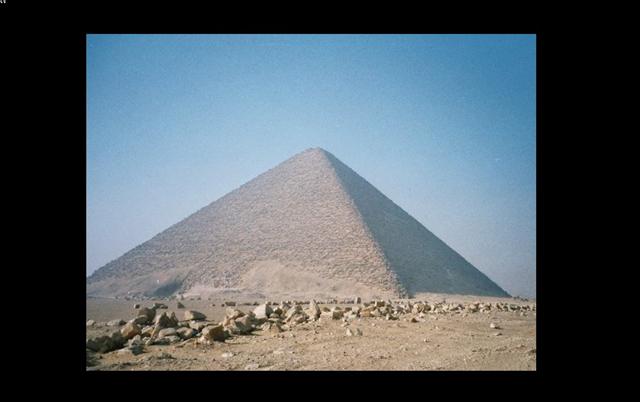
and then there was the 3rd weak one in
Meidum - which could not stand tall but collapsed.
Taken together we can perceive a pattern similar to that in
Teotihuacan with buildings for the Moon, for the Sun, and for
the Feathered Serpent:

The Citadel would then correspond to the Collapsed
Pyramid at Meidum:
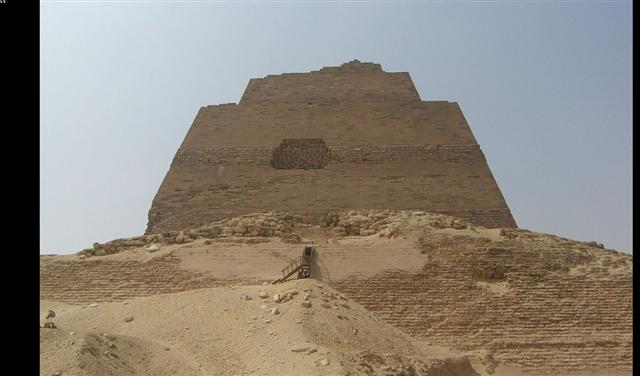
And in Teotihuacan, we can see, there were 13 (= 104 / 8) 'canoe sheds'
of various sizes and shapes close to the Pyramid of the
Moon.
|
Counting the tresses of Pachamama (the World
Mother) from left to right: |
|
1 |
29 |
90 = 107 - 17 |
1 |
26 |
78
(cfr Ga3-19) |
|
2 |
30 |
2 |
26 |
|
3 |
31 |
3 |
26 |
|
4 |
34 |
214 - 180 |
4 |
25 |
104
(cfr Ga7-13) |
|
5 |
31 |
90 = 107 - 17 |
5 |
26 |
|
6 |
30 |
6 |
27 |
|
7 |
29 |
7 |
26 |
|
Total = 396 = 214 +
182 |
|
 |
|
SEPT 17
(260) |
18 |
19
(*182) |
 |
 |
 |
|
Ga7-11 |
Ga7-12 |
Ga7-13 (182) |
|
ψ
Scorpii (244.6),
LESATH
(Sting) =
ν Scorpii
(244.8) |
χ
Scorpii (245.1),
YED
PRIOR (Hand in Front) = δ Ophiuchi,
δ Tr. Austr. (245.5) |
YED
POSTERIOR (Hand Behind) = ε Ophiuchi,
RUKBALGETHI SHEMALI (Knee, rukbah,
of
Broken Palm-branch) = τ Herculis
(246.6). δ Apodis (246.7), ο Scorpii (246.8) |
|
Nov 20
(324) |
21
(*245) |
22 |
|
°Nov
16 (320) |
17 |
18 (*242) |
|
'Oct 24 |
25 (*218) |
26 (299) |
|
"Oct 10 |
11 (*204) |
12 (285) |
| CLOSE TO THE FULL MOON: |
|
MARCH 19
(78 = 260 + 183 - 365) |
20
(*364) |
0h |
|
BEID
(Egg) = ο¹ Eridani
(62.2), μ Persei (62.8)
VINDEMIATRIX ( ε Virginis) |
Al
Dabarān-2 (The Follower)
HYADUM I = γ Tauri
(63.4) |
HYADUM II = δ¹ Tauri
(64.2) |
|
May 22 |
23 (*63) |
24 (144) |
|
°May 18 |
19 (*59) |
20 (140) |
|
'April 25 (*400) |
26 (*36) |
27 (117) |
|
"April 11 (101) |
12 (*22) |
13 |
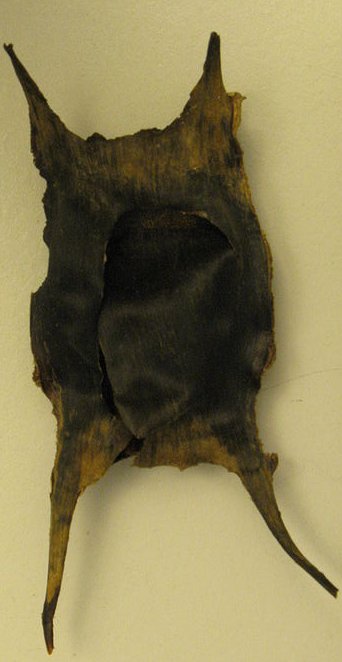
(Wikipedia: Mermaid's Purse - the egg
case of a Raja species.)
... Here,
in a very condensed form, is a typical Fijian myth of
the origin of the current ruling clan (mataqali): A
handsome, fair-skinned stranger, victim of an accident
at sea, is befriended by a shark who carries him ashore
on the south coast of Viti Levu. The stranger
wanders into the interior where he is taken in by a
local chieftain, whose daughter he eventually marries.
From this union springs the line of Noikoro
ruling chiefs, the narrator of the story being the tenth
descendant on that line. He and his clansmen are called
'The Sharks' (Na Qio) ...
... Mermaid's
purses (also known as Devil's Purses) are the egg cases
of skates, sharks and rays. They are among the common
objects which are washed up by the sea. Because they are
lightweight, they are often found at the furthest point
of the high tide. The eggcases that wash up on beaches
are usually empty, the young fish having already hatched
out ...
|
 |
 |
|
ika
hiku |
Ga7-12 |
|




















.jpg)









